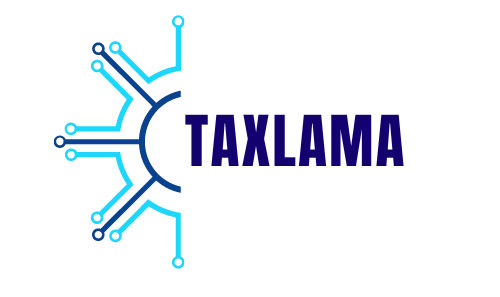Understanding your paystub as an independent contractor can be a daunting task. While employees have a relatively straightforward process of receiving a paystub with each paycheck, independent contractors often have to navigate through a maze of deductions, taxes, and other line items on their own. This is where knowing how to read your paystub becomes crucial.
For independent contractors, a paystub is more than just a breakdown of earnings; it’s a key document that serves as proof of income and is essential for managing finances, paying taxes, and applying for loans. Whether you create your own paystub using a paystub generator free tool or receive one from a client, understanding what each item on the stub means will empower you to take control of your financial life.
Why Independent Contractors Need to Understand Their Paystub
As an independent contractor, your financial situation differs significantly from that of a traditional employee. You’re responsible for managing your own taxes, retirement savings, and other financial obligations that would typically be handled by an employer. Your paystub is a snapshot of your income and deductions, providing a detailed record that can help you:
- Track Your Earnings: Understanding your paystub allows you to monitor your income over time, which is crucial for budgeting and planning.
- Ensure Accuracy: By reading your paystub carefully, you can catch any errors in calculations or deductions, ensuring you’re paid correctly.
- Prepare for Taxes: Your paystub helps you keep track of tax withholdings, making it easier to prepare for quarterly estimated tax payments or your annual tax return.
- Prove Income: A well-maintained paystub is often required when applying for loans, mortgages, or other financial products.
Whether you’re generating your own paystub using a free paystub generator or receiving one from your clients, knowing how to read it is essential for your financial health.
Breaking Down the Key Components of a Paystub
Paystubs can vary in format, but they generally include several key components that provide a detailed breakdown of your earnings and deductions. Understanding these components will help you make sense of your income and expenses.
Gross Earnings
Gross earnings represent your total income before any deductions. For independent contractors, this figure includes all payments received from clients for services rendered. If you work on multiple projects, your gross earnings might be divided into different categories, such as hourly wages, project fees, or bonuses.
Why It Matters
Your gross earnings are crucial because they form the basis for all deductions and taxes. Monitoring this figure helps ensure that you’re being paid what you’re owed for the work you’ve completed.
Deductions
Deductions are amounts subtracted from your gross earnings, which can include taxes, retirement contributions, and other withholdings. As an independent contractor, your deductions might differ from those of a traditional employee.
Common Deductions Include:
- Federal Income Tax: Unlike employees, independent contractors don’t have taxes automatically withheld. However, if you use a paystub generator free tool, you might manually input estimated federal tax withholdings to help plan for quarterly tax payments.
- State Income Tax: Depending on your location, state income tax might also be deducted.
- Self-Employment Tax: As an independent contractor, you’re responsible for both the employer and employee portions of Social Security and Medicare taxes, collectively known as self-employment tax.
- Health Insurance Premiums: If you purchase your own health insurance, you might list the premium payments as a deduction on your paystub.
- Retirement Contributions: Contributions to a retirement plan, such as a SEP IRA or a solo 401(k), may also appear as deductions.
Why It Matters
Understanding your deductions helps you plan for tax obligations and ensures that you’re setting aside enough money for retirement and other essential expenses. By using a free paystub generator, you can track these deductions accurately.
Net Pay
Net pay, also known as “take-home pay,” is the amount left after all deductions have been subtracted from your gross earnings. This is the actual amount you receive in your bank account or as a check.
Why It Matters
Your net pay is the most important figure on your paystub because it reflects the money you have available to cover your living expenses. By monitoring your net pay, you can budget effectively and ensure you’re meeting your financial goals.
Using a Paystub Generator Free Tool
As an independent contractor, you might not receive a paystub from your clients, especially if you’re working with multiple clients or on a freelance basis. In such cases, using a paystub generator free tool can be incredibly helpful. These tools allow you to create professional paystubs that include all the essential components discussed above.
Benefits of a Free Paystub Generator
- Accuracy: A paystub generator ensures that all calculations, including taxes and deductions, are accurate.
- Customization: You can customize your paystub to reflect your specific income and deduction categories.
- Record-Keeping: Generating your own paystubs helps you maintain accurate financial records, which is crucial for tax reporting and financial planning.
When choosing a free paystub generator, look for one that allows you to input detailed information, such as multiple income streams and various types of deductions. This flexibility ensures that your paystub accurately reflects your financial situation.
Common Mistakes to Avoid When Reading Your Paystub
Even if you use a paystub generator free tool, it’s important to be aware of common mistakes that can occur on paystubs. Being vigilant will help you avoid financial discrepancies and ensure you’re receiving the correct amount of money.
Overlooking Deductions
It’s easy to focus on your gross earnings and net pay while overlooking the deductions section. However, failing to review deductions carefully can lead to errors, such as overpayment of taxes or missing out on retirement contributions.
Ignoring Errors in Personal Information
Ensure that your personal information, such as your name, address, and Social Security number, is accurate on your paystub. Errors in this information can lead to issues with tax reporting and other financial matters.
Misinterpreting Earnings
Sometimes, the way earnings are listed on a paystub can be confusing, especially if you have multiple income streams. Make sure you understand how your earnings are broken down and whether any bonuses or additional payments are included.
How to Use Your Paystub for Financial Planning
Your paystub is a valuable tool for financial planning, whether you’re budgeting for the month or planning for long-term goals. Here’s how you can use the information on your paystub to stay on top of your finances.
Budgeting
By reviewing your net pay, you can create a budget that aligns with your income. Track your expenses and compare them to your take-home pay to ensure you’re living within your means.
Tax Planning
Use your paystub to estimate your tax obligations. If you notice that your tax withholdings are too low, consider adjusting your estimated payments to avoid a large tax bill at the end of the year.
Saving for Retirement
If your paystub shows deductions for retirement contributions, make sure you’re contributing enough to meet your retirement goals. Consider increasing your contributions if you have room in your budget.
Applying for Loans or Credit
When applying for a loan, mortgage, or credit card, your paystub can serve as proof of income. Lenders typically look at your gross earnings and net pay to assess your ability to repay the loan.
Conclusion
Understanding how to read your paystub as an independent contractor is essential for managing your finances effectively. Whether you receive a paystub from a client or generate your own using a paystub generator free tool, knowing what each item on the stub means will help you track your income, plan for taxes, and ensure that you’re being paid accurately.
By paying attention to the details on your paystub, you can take control of your financial life, avoid common mistakes, and use the information to plan for your future. So, the next time you receive or create a paystub, take the time to review it thoroughly – your financial health depends on it.




